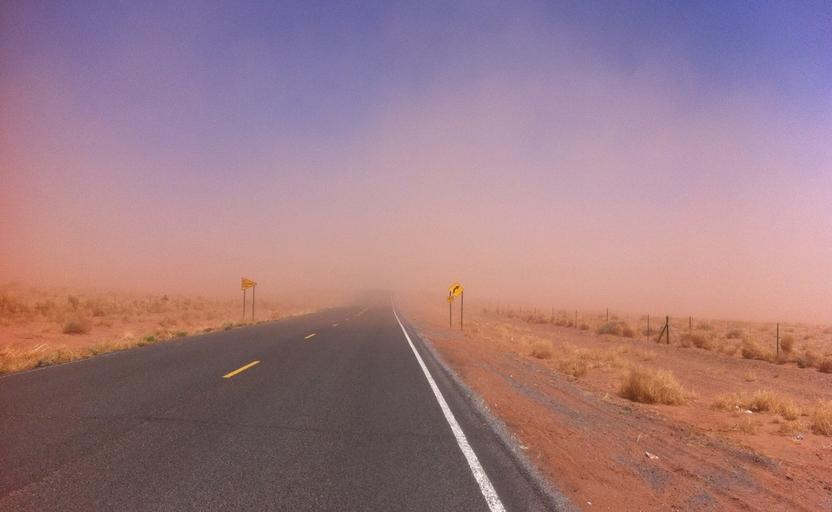MAKE A MEME
View Large Image

| View Original: | Dust_Storms.jpg (1296x798) | |||
| Download: | Original | Medium | Small | Thumb |
| Courtesy of: | www.flickr.com | More Like This | ||
| Keywords: usgs climate climate change climatechange dust storm dust storm duststorm arizona drought water nutrient loss nutrientloss vegetation hazards natural hazards naturalhazards outdoor road sky Dust carried by the wind has far-reaching effects, including the loss of nutrients and water-holding capacity from landscapes, and the speeding up of the melting of snow, which affects the timing and magnitude of runoff into streams and rivers. Low vegetation cover can especially be a problem in drought years in abandoned agricultural fields, which are generally dominated by annual plants. This means that the consequences of dust storms, including motor vehicle crashes, are high in a drought year and low in years with more precipitation. Future climate scenarios predict that drought conditions will worsen, and therefore more dust storms are likely. Photo: Dust storm near Winslow, AZ in April 2011. Seth Munson , USGS. Dust carried by the wind has far-reaching effects, including the loss of nutrients and water-holding capacity from landscapes, and the speeding up of the melting of snow, which affects the timing and magnitude of runoff into streams and rivers. Low vegetation cover can especially be a problem in drought years in abandoned agricultural fields, which are generally dominated by annual plants. This means that the consequences of dust storms, including motor vehicle crashes, are high in a drought year and low in years with more precipitation. Future climate scenarios predict that drought conditions will worsen, and therefore more dust storms are likely. Photo: Dust storm near Winslow, AZ in April 2011. Seth Munson , USGS. | ||||